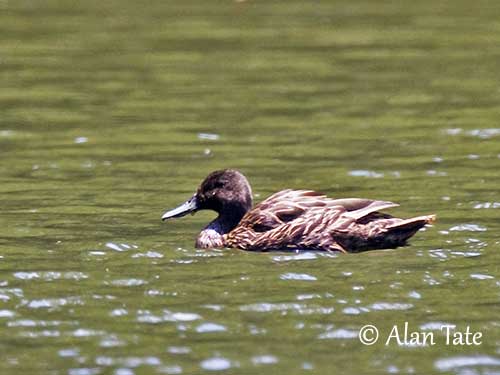
Fr: Canard de Meller
Ang: Meller’s Duck
All: Madagaskarente
Esp: Ánade malgache
Ita: Germano di Meller
Nd: Mellers Eend
Sd: Mellers and
Mal: akaka, Akaka mainty, Akaky mainty, Angaka, Rahaka
Photographers:
John Anderson
John Anderson Photo Galleries
William Price
PBase-tereksandpiper & Flickr William Price
Dubi Shapiro
Dubi Shapiro Photo Galleries & Dubi Shapiro's Pictures on IBC
Alan & Ann Tate
AA Bird Photography
Text by Nicole Bouglouan
Sources:
HANDBOOK OF THE BIRDS OF THE WORLD vol 1 by Josep del Hoyo-Andrew Elliot-Jordi Sargatal - Lynx Edicions - ISBN: 8487334105
GUIDE DES CANARDS, DES OIES ET DES CYGNES – de Steve Madge - Delachaux et Niestlé - ISBN: 2603013769
The Birds of Africa: Volume VIII: The Malagasy Region: Madagascar, Seychelles, Comoros, Mascarenes - Par Roger Safford, Frank Hawkins – ISBN: 1408190494, 9781408190494- Editeur: A&C Black, 2013
Birds of Madagascar and the Indian Ocean Islands Par Roger Safford, Adrian Skerrett, Frank Hawkins – ISBN: 1472924118, 9781472924117- Editeur: Bloomsbury Publishing, 2015
Wikipedia, the free encyclopaedia
Meller’s Duck
Anas melleri
Anseriformes Order – Anatidae Family
INTRODUCTION:
The Meller’s Duck is endemic to Madagascar. It was also introduced to Mauritius where it is now probably extinct in the wild.
It frequents freshwater marshes, rivers and lakes within swampy forested areas, and can be seen up to 2,000 metres of elevation, but usually lower. Its behaviour is poorly known but it is probably fairly similar to that of Mallard (Anas platyrhynchos).
The Meller’s Duck is widely hunted and trapped for food. It is threatened by habitat loss through drainage of wetlands and deforestation. It is currently listed as Endangered.
The name of this duck pays tribute to the botanist Charles James Meller.
DESCRIPTION OF THE BIRD:
Biometrics:
Length: 63-68 cm
Weight: M: 883-1240 g – F: 831-1140 g
The Meller’s Duck is very similar to the female Mallard, but it is larger with more elongated appearance. The plumage is brown overall, with pale brown to buff flecks and streaks. However, we can see a conspicuous dark green speculum on secondaries, outlined with black and white. The primary flight-feathers are dark brown with darker tips.
The underwing is whitish with dark flight-feathers.
The long, thick bill is blue-grey with black nail and blackish wash at base. The eyes are dark brown. Legs and webbed feet are brown-orange.

Male and female are similar but the female is slightly smaller. She is slightly duller with shorter bill and shorter, buff-tipped central rectrices. The head may appear paler than in male.
The juvenile is mostly reddish-brown with reddish fringes to feathers.
RANGE:
The Meller’s Duck is mainly confined to the E of the island since deforestation of central plateau. The most important site is Lake Alaotra.
This species was introduced to Mauritius around 1850, but it is now considered extinct in the wild.
HABITAT:
The Meller’s Duck frequents freshwater marshes, lakes and rivers in humid forest of the east. Outside the breeding season, it disperses to adjacent areas including lakes in deforested regions. This species occurs from sea-level up to 2,000 metres of elevation, but mostly between 800 and 1,500 metres.

The Meller’s Duck is very territorial when breeding, and the territory is strongly defended and especially after the laying.
The courtship displays are very similar to those of Mallard. Some displays such as “grunt-whistle” and “head-up-tail-up” are significantly longer, allowing the bird to expose the long neck and the bright-coloured speculum.
They become very aggressive in territory defence. The male remains on the territory while the female is incubating, and it is aggressive against conspecific intruders. Males may fight together, grabbing the opponent’s neck with the bill and hitting with the wings. Some aerial chases are reported too.
The paired female is always defended, involving rare extra-pair copulations. They are monogamous. The mates remain together during the incubation, and may mate again in consecutive breeding seasons.
The Meller’s Duck is sedentary, but some post breeding dispersions are reported. The species does not wander outside Madagascar.
They are good fliers. The flight is powerful with steady wingbeats.

REPRODUCTION OF THIS SPECIES:
The breeding season occurs mainly during the wet season between November and February, but nesting is also reported between July and April, involving more extended season.
The Meller’s Duck breeds in single pairs or loose groups. The nest is near or on the ground and close to water, usually among vegetation such as clump of grass. The female collects the materials such as dry grass and leaves near the nest-site. The cup is lined with down towards the end of the laying.
In captivity, the female lays 5-11 dull whitish eggs and incubates alone during 28-29 days while the male remains in the territory.
The chicks resemble Mallard’s chicks. They reach the full size at 77-84 days old, and fledge at 11 weeks. The female accompanies the precocial chicks to the feeding areas. They are sexually mature at one year old.
CALLS AND SONGS: SOUNDS BY XENO-CANTO
The Meller’s Duck male gives quiet, nasal “nhek” or “raaet” repeated every 2-5 seconds. The female utters a subdued quacking “wark…wark…” usually higher-pitched than Mallard’s calls.
BEHAVIOUR IN THE WILD:
The diet of the Meller’s Duck is poorly known, but the duck feeds on wide range of invertebrates (molluscs), aquatic vegetation such as water lilies and seeds of aquatic plants.
Like most Anatidae, it forages by dabbling in the mud and upending, and also forages on the shore. It may chase aquatic insects across the water surface. It is more active during the day, but is has also nocturnal habits.
The Meller’s Duck may form mixed-species foraging flocks of up to 160 individuals and at roosts during the day with an observation of 260 together at Lake Alaotra.

